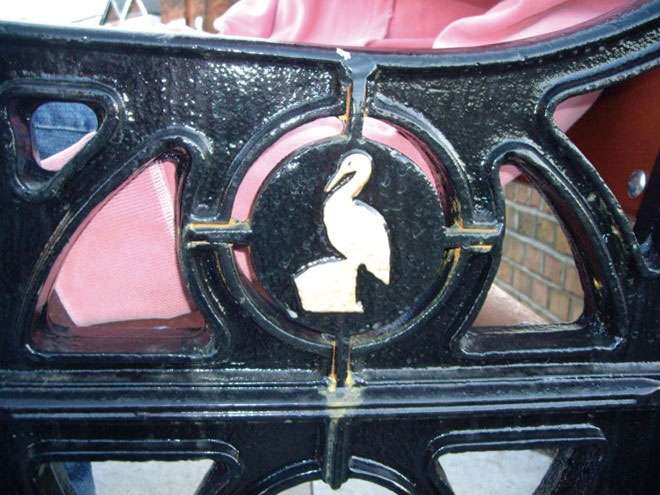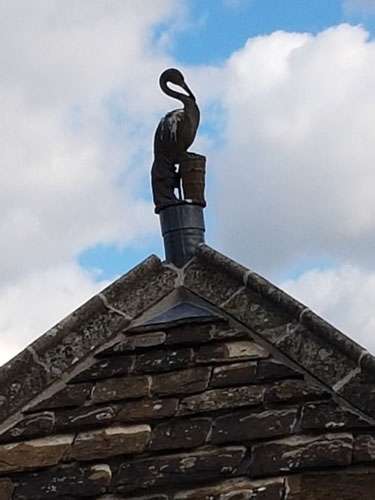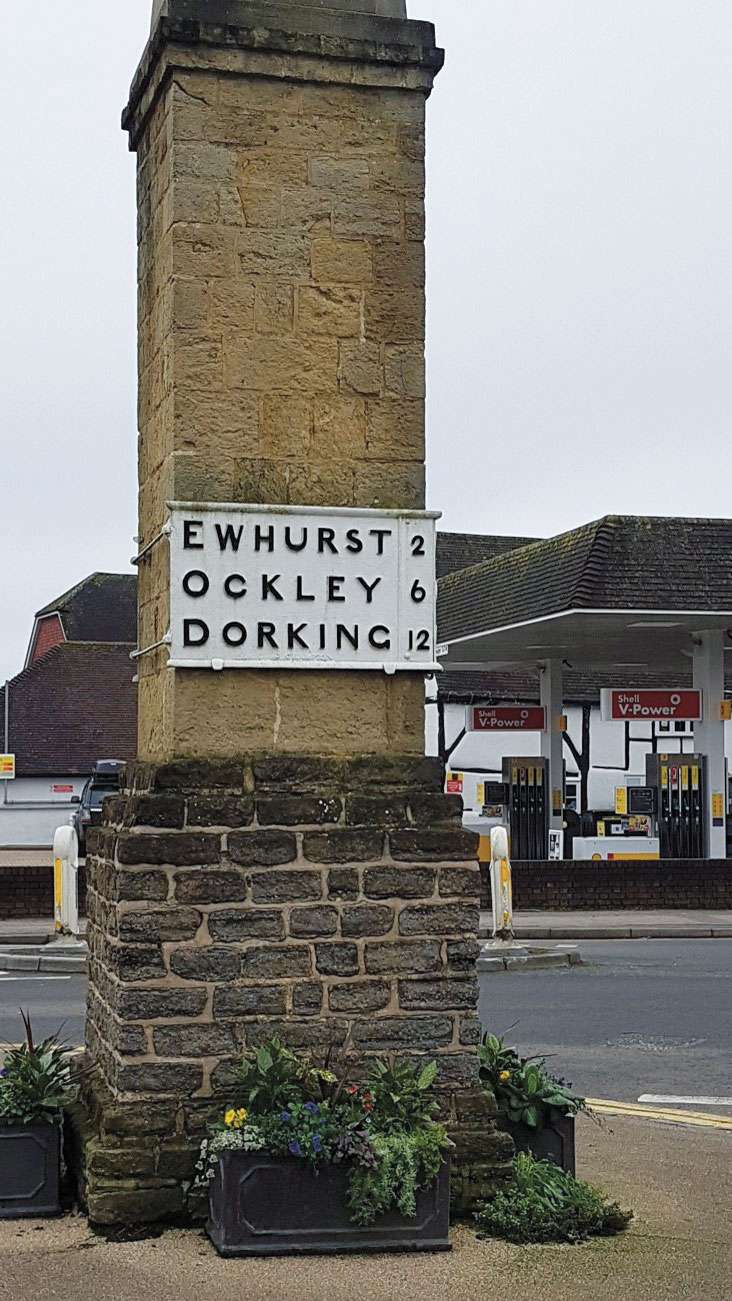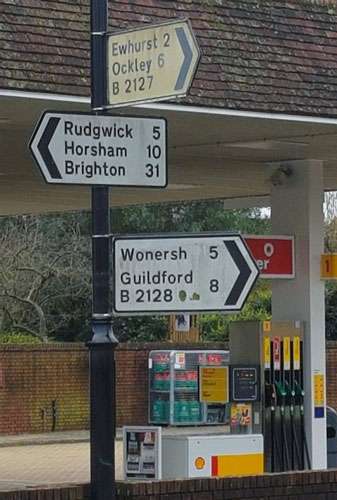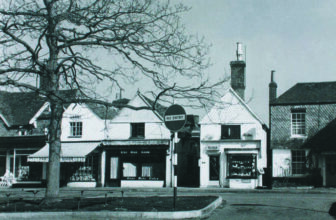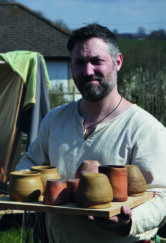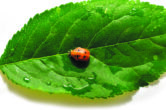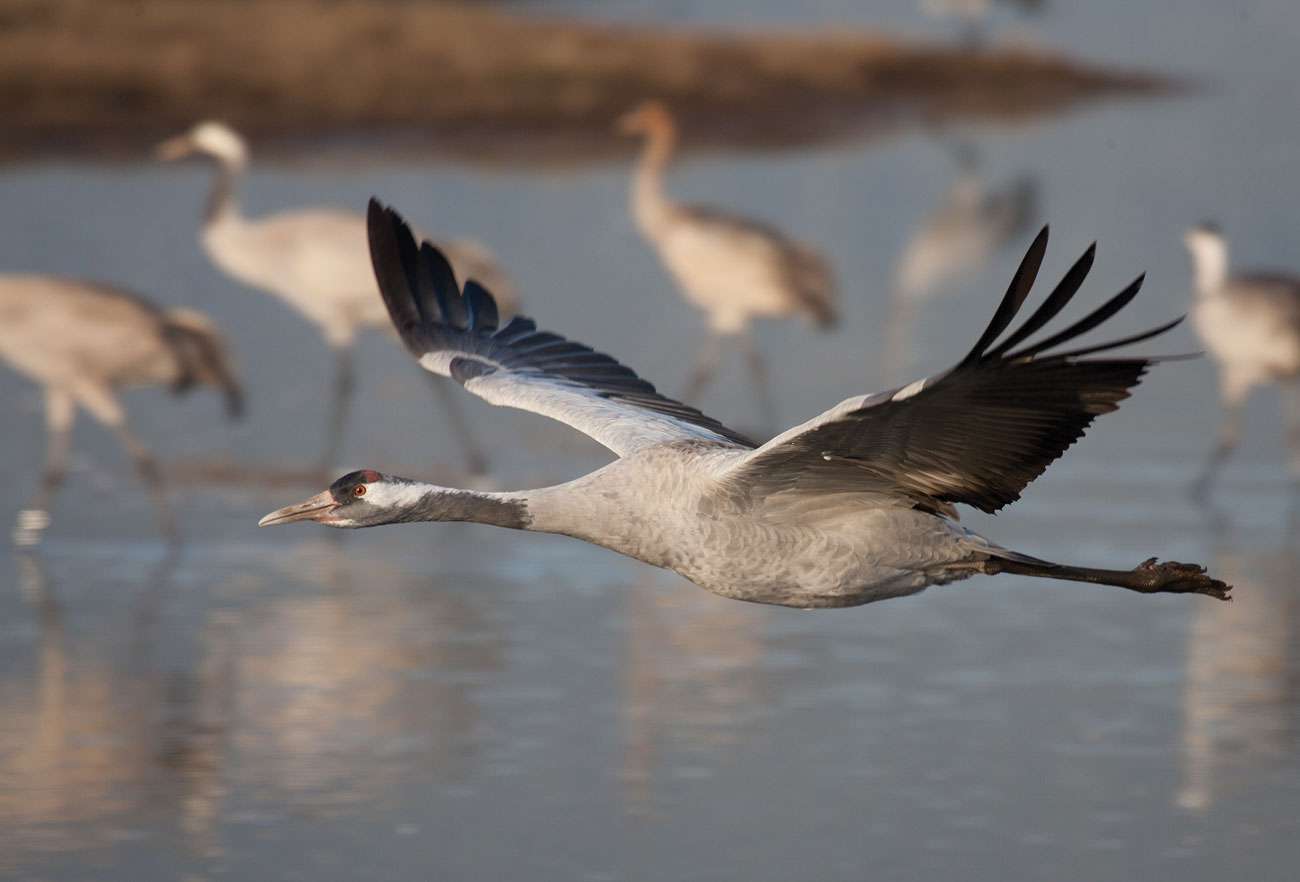
Common Crane (Grus Grus) in full flight
Almost all Cranleigh’s road names have been given in the last 150 years. By contrast, many of the nearby farms and villages have names that go back many centuries. King William the Conqueror famously ordered a great survey of England, way back in 1086, to make sure he was getting all the revenue he thought he was entitled to. We know it as Domesday Book.
Amazingly, many places around here feature in it with recognizable names. Albury is there, and so are Bramley, Compton, Dorking, East Clandon, East Horsley, Farleigh, Farnham, Godalming, Gomshall, Guildford, Hambledon, Loseley, Ockley, Send, Shalford, Shere, Tuesley, Wanborough, Weybridge, Wisley and Woking!
These names were formed in *Old English, which developed out of the Anglo-Saxon language spoken by the invaders of the 5th-7th centuries. There are written references to some local places even before 1086. The ancient Anglo-Saxon Chronicle refers to Kingston in the year 923. Woking figures there in 777!
What about Cranleigh? Its name comes from two Old English words, ‘cran’ for crane, and ‘ley’ or ‘leigh’ which means ‘a clearing’. It probably acquired this name before Domesday Book was compiled. But the earliest occasion it appears in writing (that has been found up to now) is 1166, in the royal financial records, when it is spelt ‘Cranelega’ and ‘Cranlea’. The reason for its non-appearance earlier may be because Cranleigh was then in two parts – the western part around the Common came under Bramley and the eastern one around the church (perhaps at first merely a chapel) was a possession of Shere.
Cranes are similar to herons, but larger and unrelated. Roast crane was a delicacy eaten on special occasions by the nobility. The number of cranes in the country was declining by 1533, when an Act of Parliament forbade taking cranes’ eggs from nests. Soon they had died out entirely in England. In the late 20th century, however, after 400 years’ absence, some Common Cranes reappeared on the Norfolk Broads, and even bred, so that there are now about 72 pairs there. The Wildfowl and Wetlands Trust at Slimbridge started a project in 2009 to rear cranes and release them on the Somerset Wetlands. Maybe someday cranes will find their way back to their old haunts at Cranleigh. Meanwhile, representations of cranes are to be found everywhere here.
There are lots of other places near here that have ‘leigh’ in their names (spelt variously): Bramley, East and West Horsley, Leigh, Ockley, Rowly and Shamley Green, for a start. They all began as clearings in the great ancient forest known as the Weald, which once stretched right across Kent, Surrey and Sussex, between the North and South Downs. They are the places where Saxons first settled. No matter that you don’t know what the rest of the name means – that’s a matter for experts, who produce dictionaries about them – it adds interest to know that this is where some early people found or created a clearing in the forest and made it their home. Curiously enough, I have lived in three of these original clearings – Horley, Purley and Cranleigh.
Another word to look out for is ‘hurst’, which means ‘a wooded hill’ and also derives from the ancient Wealden forest. We have an abundance of local examples, like Bookhurst, Ewhurst, Holdhurst, Longhurst, Nanhurst, Nuthurst, Willinghurst and Wyphurst. If you are on foot, be forewarned: you are approaching a rise.
A final suggestion is to look out for the little syllable ‘ing’ in the middle or at the end of a place name. This, again, crops up frequently round here, and is Old English for the family or followers of some Saxon leader. The dictionaries suggest that Woking means the group led by Wocc or Woca, and that Dorking means the family and friends of Deorc. Artington, Chiddingfold and Willinghurst therefore are where a Saxon family or group settled, even if it is beyond us amateurs to work out what their leader was called.
As you drive towards the south coast, where the Saxons landed before making their way inland, ‘ing’ names become ever more frequent. There are Ardingly, Goring, Rottingdean, Steyning, Storrington, Washington, Worthing, and plenty more to spot.
The Cranleigh History Society meets on the second Thursday of each month at 8.00pm in the Band Room. The next meeting will be on Thursday March 10th, when Tom Leeke will speak on ‘Russia – then and now’.
*Old English names in italics: Albury (Eldeberie), Bramley (Bronlei), Compton (Contone), Dorking (Dorchinges), East Clandon (Clanedun), East Horsley (Horslei), Farleigh (Ferlega), Farnham (Ferneham), Godalming (Godelminge), Gomshall (Gomeselle), Guildford (Geldeford, Gildeford), Hambledon (Hameledone), Loseley (Losele), Ockley (Hochlei), Send (Sande), Shalford (Scaldefor), Shere (Essira), Stoke by Guildford (Stochae), Tuesley (Tiwesle), Wanborough (Weneberge), Weybridge (Webrige), Wisley (Wiselei), Woking (Wochinges).

